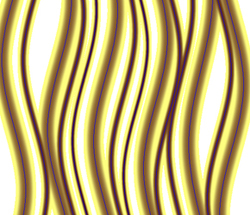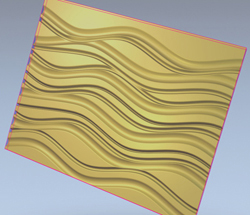Home >> Latest ArtCAM News >> Textured surfaces, the latest trend in furniture design


Delcam, a CADCAM software development specialist, discusses the alternative methods of creating tactile surfaces.
Textured doors and panels are becoming increasingly popular in today’s furniture industry. However, these are relatively simple things to create using any one of the CADCAM (Computer Aided Design & Manufacturing) software packages in Delcam’s ArtCAM range.
One simplistic, yet effective, method using any one of the ArtCAM products: Express, Insignia or Pro, is to use the shapes and sizes of CNC router tools, such as Conical or Ball Nose tools, to create the texture as they carve away the material. This can be done by designing line drawings (also known as vectors) and repeating or mixing them with other designs which will then be used for the router tools to follow (the toolpath).
An alternative method to create extremely eye-catching results is for the designer to choose from a variety of textures available in the ArtCAM Relief Clipart Library, or by importing a photo or image of a texture into the software. ArtCAM is compatible with a wide variety of bitmap file formats.
ArtCAM attributes differing heights to the lights and darks within an image to create a greyscale image, which is then converted into a 3D image/relief. In ArtCAM Express and Insignia, this can then be saved and imported into any ArtCAM model file on which the designer is working.
With ArtCAM Pro, the advanced product in the range, the user has even greater design freedom, as they can then manipulate and work with the 3D texture relief to create their complete 3D model using its patent pending relief layer management system. Additionally, the user can create a multitude of organic textures with its sophisticated modelling and sculpting tools.
For example, using ArtCAM Pro’s ‘Texture Relief’ tool, the user can select from an assortment of shapes that they would like to apply to their relief, such as conical, spherical or weave effects. With the ‘Clone’ tool, the user’s 3D texture relief can be used as a sculpting brush of any size, and then ‘stamped’ on the relief layer wherever the user clicks their mouse or taps their pen on the Wacom tablet. Other sculpting tools can then be used to smudge and smooth the design. Unique shapes that spin, twist and turn can also be easily made with ArtCAM’s intuitive relief tools.
Unlike other packages on the market, all ArtCAM Products offer the user the opportunity to see their design prior to machining. In ArtCAM Pro, the user can view their textured panels with their other models, or furniture components, so that they can see how the textured piece will look in context.
These are just a handful of methods that can be used to create tactile surfaces. However, if you want to find out more about using CADCAM and CNC technology to create unique furniture go to: www.artcam.com.
